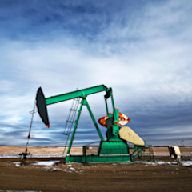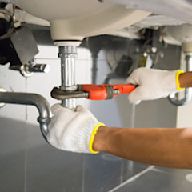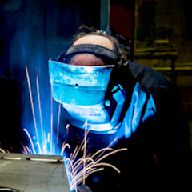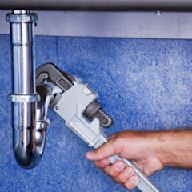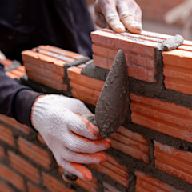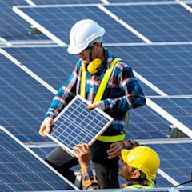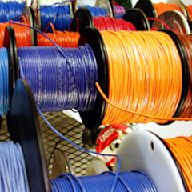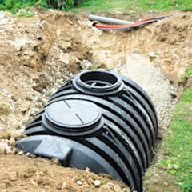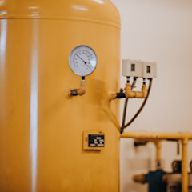Search results
The meaning of PIPELINE is a line of pipe with pumps, valves, and control devices for conveying liquids, gases, or finely divided solids. How to use pipeline in a sentence.
- Overview
- History
- Types
- Water and sewer lines
pipeline, line of pipe equipped with pumps and valves and other control devices for moving liquids, gases, and slurries (fine particles suspended in liquid). Pipeline sizes vary from the 2-inch- (5-centimetre-) diameter lines used in oil-well gathering systems to lines 30 feet (9 metres) across in high-volume water and sewage networks. Pipelines usually consist of sections of pipe made of metal (e.g., steel, cast iron, and aluminum), though some are constructed of concrete, clay products, and occasionally plastics. The sections are welded together and, in most cases, laid underground.
Most countries have an extensive network of pipelines. Because they are usually out of sight, their contribution to freight transport and their importance to the economy are often unrecognized by the general public. Yet, virtually all the water transported from treatment plants to individual households, all the natural gas from wellheads to individual users, and practically all the long-distance transportation of oil overland goes by pipeline.
For thousands of years, pipelines have been constructed in various parts of the world to convey water for drinking and irrigation. This includes ancient use in China of pipe made of hollow bamboo and the use of aqueducts by the Romans and Persians. The Chinese even used bamboo pipe to transmit natural gas to light their capital, Peking, as early as 400 bce.
A significant improvement of pipeline technology took place in the 18th century, when cast-iron pipes were used commercially. Another major milestone was the advent in the 19th century of steel pipe, which greatly increased the strength of pipes of all sizes. The development of high-strength steel pipes made it possible to transport natural gas and oil over long distances. Initially, all steel pipes had to be threaded together. This was difficult to do for large pipes, and they were apt to leak under high pressure. The application of welding to join pipes in the 1920s made it possible to construct leakproof, high-pressure, large-diameter pipelines. Today, most high-pressure piping consists of steel pipe with welded joints.
line of pipe equiMajor innovations since 1950 include introduction of ductile iron and large-diameter concrete pressure pipes for water; use of polyvinyl chloride (PVC) pipe for sewers; use of “pigs” to clean the interior of pipelines and to perform other duties; “batching” of different petroleum products in a common pipeline; application of cathodic protection to reduce corrosion and extend pipeline life; use of space-age technologies such as computers to control pipelines and microwave stations and satellites to communicate between headquarters and the field; and new technologies and extensive measures to prevent and detect pipeline leaks. Furthermore, many new devices have been invented or produced to facilitate pipeline construction. These include large side booms to lay pipes, machines to drill under rivers and roads for crossing, machines to bend large pipes in the field, and X rays to detect welding flaws.
Students save 67%! Learn more about our special academic rate today.
Pipelines can be categorized in different ways. In what follows, pipelines will be categorized according to the commodity transported and the type of fluid flow.
Pipelines are used universally to bring water from treatment plants to individual households or buildings. They form an underground network of pipe beneath cities and streets. Water pipelines are usually laid a few feet (one metre or more) underground, depending on the frost line of the location and the need for protection against accidental damage by digging or construction activities.
In modern water engineering, while copper tubing is commonly used for indoor plumbing, large-diameter outdoor high-pressure water mains (trunk lines) may use steel, ductile-iron, or concrete pressure pipes. Smaller-diameter lines (branch lines) may use steel, ductile-iron, or PVC pipes. When metal pipes are used to carry drinking water, the interior of the pipe often has a plastic or cement lining to prevent rusting, which may lead to a deterioration in water quality. The exteriors of metal pipes also are coated with an asphalt product and wrapped with special tape to reduce corrosion due to contact with certain soils. In addition, direct-current electrodes are often placed along steel pipelines in what is called cathodic protection.
- Henry Liu
A pipeline is a system of pipes for long-distance transportation of a liquid or gas, typically to a market area for consumption. The latest data from 2014 gives a total of slightly less than 2,175,000 miles (3,500,000 km) of pipeline in 120 countries around the world.
EDGE Pipeline delivers live auction lane bidding, pre-sale research tools, and market reports of the combined inventories of the best independent auto auctions in the United States. Sign Up for Free! Sign In. Strength in Numbers. 186 independent auctions. 418k vehicles available. 529 simulcast lanes this week. Powerful Features You Need.
PIPELINE definition: 1. a very long large tube, often underground, through which liquid or gas can flow for long…. Learn more.
PIPELINE meaning: 1. a very long large tube, often underground, through which liquid or gas can flow for long…. Learn more.
May 23, 2022 · May 23, 2022 // 10 min read. A DevOps pipeline combines processes, tooling, and automation to enable organizations and software teams to build, test, and deliver high-quality software quickly to end users. DevOps has reshaped how organizations build and deploy software through a combination of people, processes, and products that impacts every ...
People also ask
What is a pipeline & how does it work?
What does pipeline mean?
What does pipeline mean in a sentence?
What is edge pipeline?
